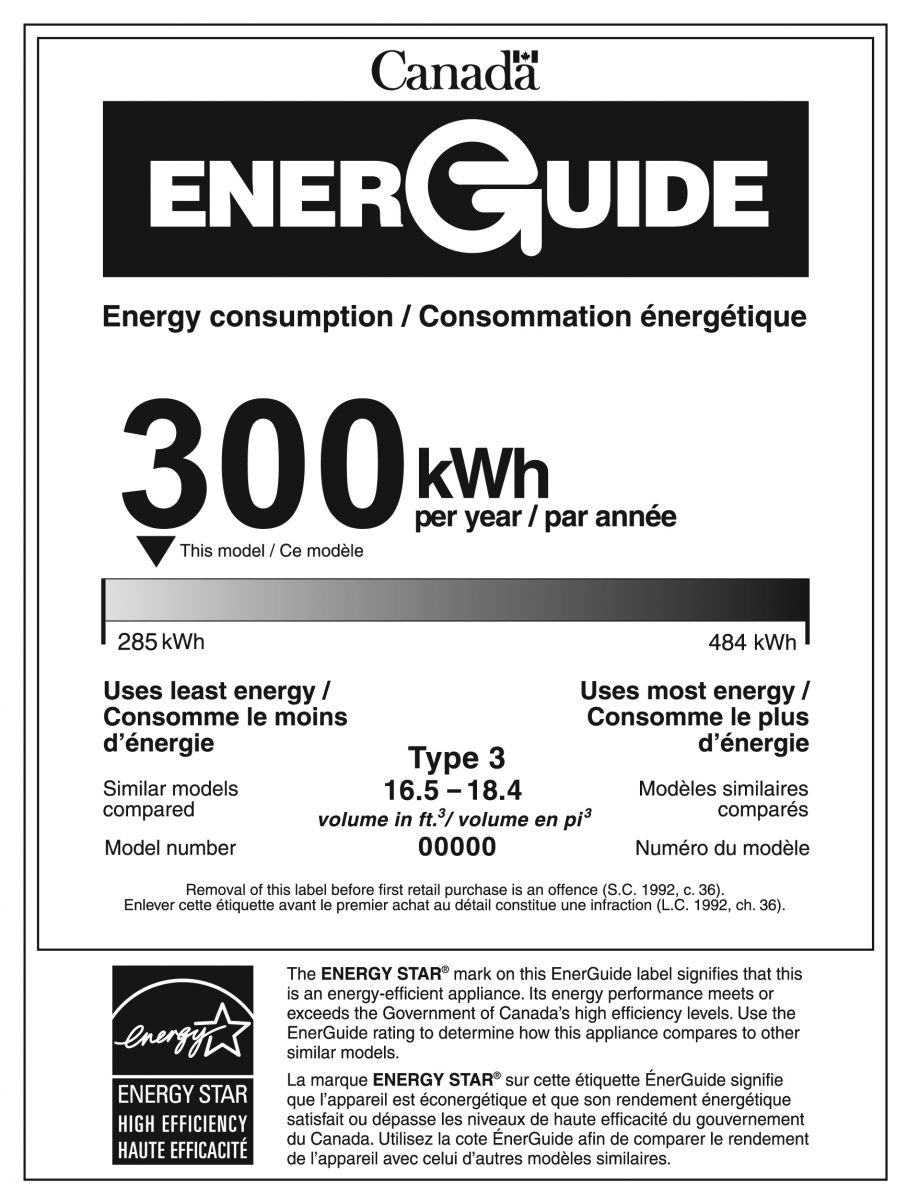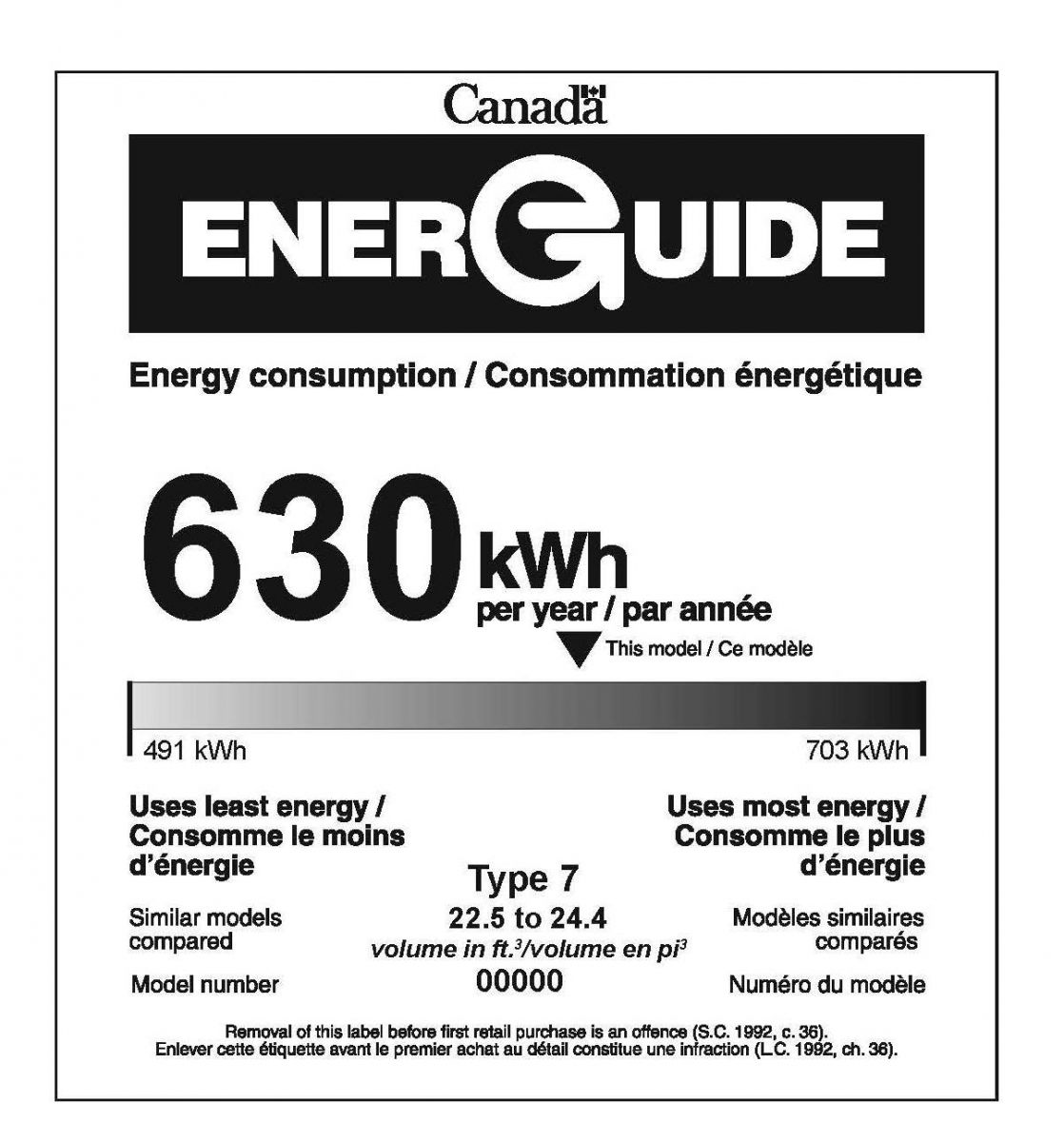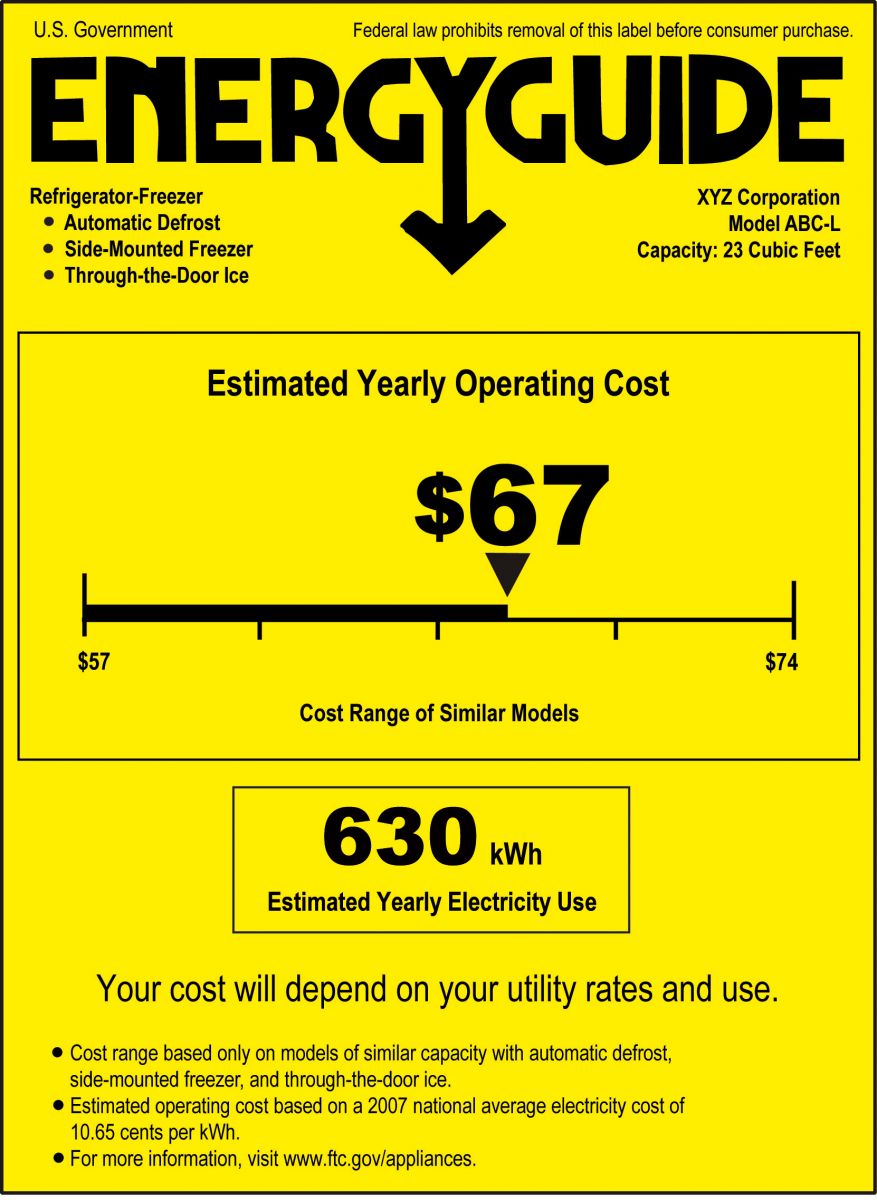The distinctive EnerGuide label is a familiar sight to most Canadians. We see it when we shop for new appliances, look at the literature for a new furnace or read the fine print on a light bulb package.
The EnerGuide label lets us know how much energy a product uses and how that compares to similar models.
Detailed labelling information for manufacturers
Additional information for retailers

EnerGuide label for appliances
There are four things displayed on the label
- Annual energy consumption of the model in kilowatt hours ( kWh)
- Energy consumption indicator, which positions the model compared with the most efficient and least efficient models in the same class
- Type and capacity of models that make up this class
- The model number
The EnerGuide label is mandatory for:
- clothes dryers
- clothes washers (including integrated washer-dryers)
- dishwashers
- freezers
- electric ranges, cooktops and ovens
- miscellaneous refrigeration products
- refrigerators and refrigerator-freezers
- room air conditioners
The EnerGuide label is voluntary for:
- central air conditioners
- furnaces (oil-, gas- or propane-fired)
- heat pumps—air source
- gas fireplaces
- water heaters
Types
The mandatory EnerGuide label can take the form of an adhesive tag, a flap tag (similar to a sticky note) or a hang tag. The voluntary EnerGuide label is usually presented as a graphic in product literature.
EnerGuide and ENERGY STAR®
Often products (such as appliances and room air conditioners), that are regulated and carry the EnerGuide label are also ENERGY STAR certified models. In these cases, the ENERGY STAR symbol will appear at the bottom of the EnerGuide label.

There are five main items displayed on the label
- Annual energy consumption of the model in kilowatt hours ( kWh)
- Energy consumption indicator, which positions the model compared with the most efficient and least efficient models in the same class
- Type and capacity of models that make up this class
- The model number
- The ENERGY STAR symbol
Bilingual labels
All mandatory labels are required to be bilingual English and French. Voluntary labels can be unilingual English or French in keeping with the language of the product literature.
Canadian and American appliance labels
You may see both the black-and-white Canadian EnerGuide label and the black-and-yellow American EnergyGuide label on new major appliances. The labels can be printed back-to-back on a hang tag or side-by-side.
Canada and the United States usually use similar test methods to determine the energy rating. However, the range on the scale may differ because of differences in the number and types of models available in each country.


Canada’s EnerGuide label for appliances
There are four main items displayed on the label
- Annual energy consumption of the model in kilowatt hours ( kWh)
- Energy consumption indicator, which positions the model compared with the most efficient and least efficient models in the same class
- Type and capacity of models that make up this class
- The model number
United States EnergyGuide label
There are four main items displayed on the label
- Key features of the appliance
- The make, model and size
- The estimated cost to run the appliance based on electric use
- The annual energy use shown in kilowatt hours (kWh)
The ENERGY STAR name and symbol are trademarks registered in Canada by the United States Environmental Protection Agency and are administered and promoted by Natural Resources Canada.